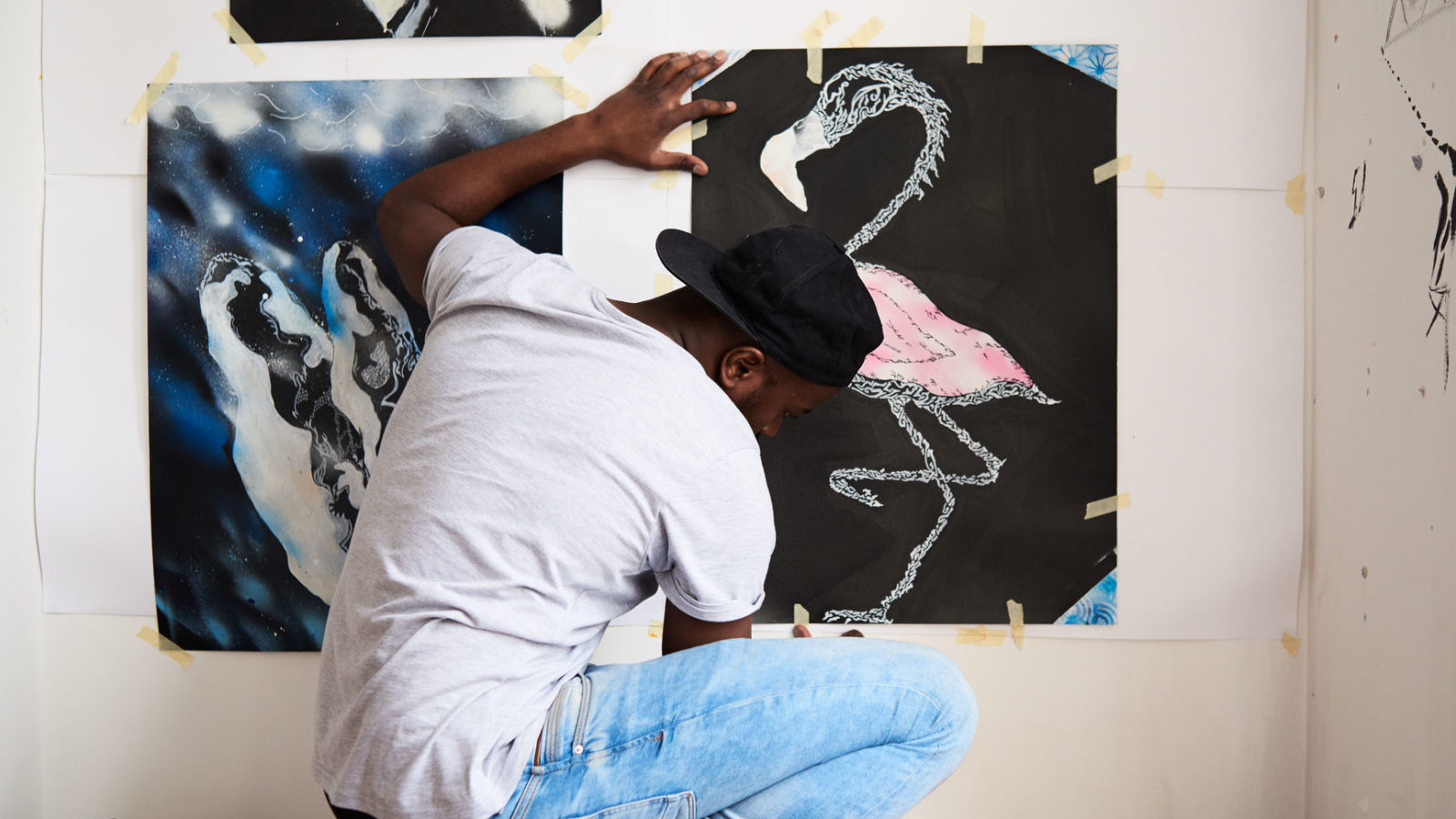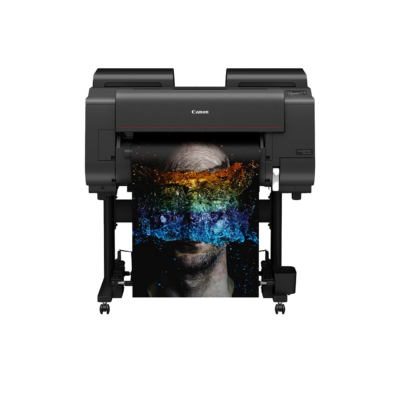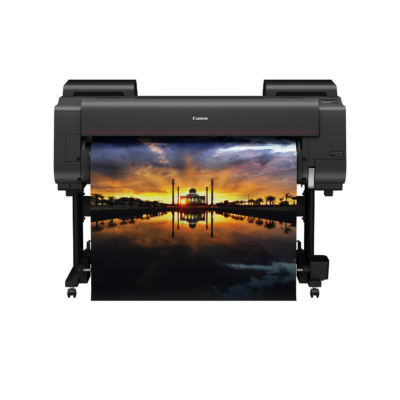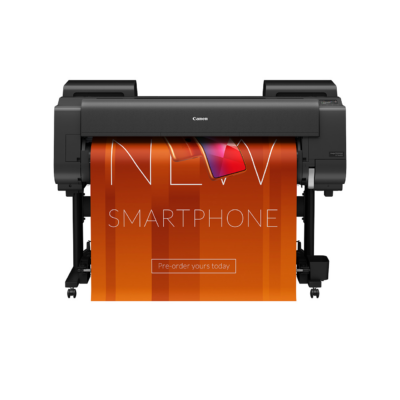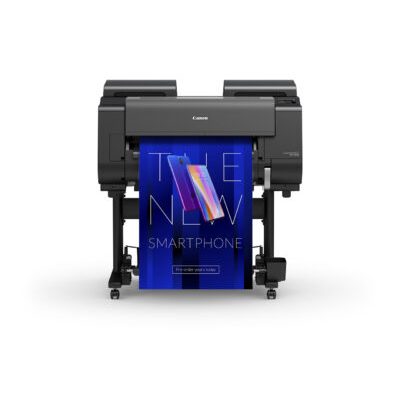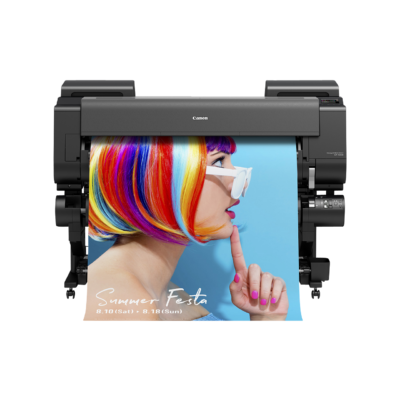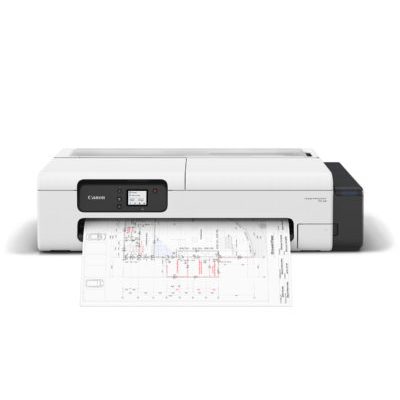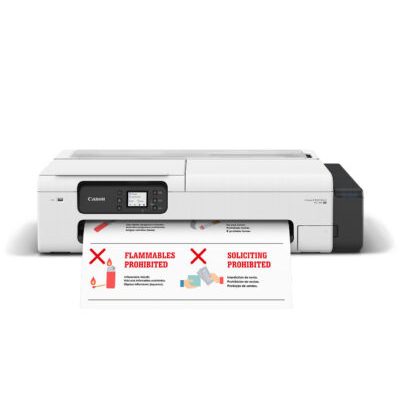Sticking points: Tips on gluing down large format printing projects
Not every large format print is a photograph meant for a gallery frame. You’re just as likely to print banners, signs, and even technical drawings. In many cases you’ll want to mount those papers to more durable material—anything from cardboard to corrugated plastic to metal—for ease of use and/or display. Here’s the lowdown on some common adhesives that can get the job done.
CRAFT GLUE
Standard “white” glue is readily available, inexpensive, and easy to use. The go-to adhesive for school assignments and arts-and-crafts projects.
Works well with: paper, cardboard, lightweight cloth
Drawbacks: Weak adherence until it’s dry—at least an hour to set, and 24 hours to fully cure. Not suitable for applications requiring water resistance.
WOOD GLUE
Offers a better immediate hold than craft glue, but still takes some time to set and cure. Can be sanded, if necessary.
Works well with: wood-on-wood and paper-on-wood applications
Drawbacks: Takes approximately 24 hours to cure. Not all wood glues are water-resistant.
Usage tip: If gluing paper to wood, it’s best to first seal the wood (with an acrylic polymer sealant, for example). This helps the glue go on more smoothly, and prevents the wood’s natural acidity from leeching into the paper.
HOT GLUE
Melted and applied using an electric glue gun. Once cooled, it sets quickly on a variety of materials. Higher-viscosity types are good for bonding porous materials.
Works well with: rubbers, ceramics, metals, plastics, glass, and wood
Drawbacks: Shouldn’t be used on heat-sensitive substrates; the glue itself loses strength at higher temperatures.
SUPER GLUE
Various formulations of super glue (also called cyanoacrylate adhesive) create a very strong, waterproof bond within minutes or even seconds.
Works well with: wood, metal, ceramics, glass
Drawbacks: Media to be glued must fit together well (e.g. two flat, non-porous surfaces). Once cured, it’s very difficult to remove.
Usage tip: If you accidentally super-glue your fingers together, soak them in hot soapy water to weaken the bond.
SPRAY ADHESIVE
A strong-bonding, fast-drying glue that’s literally sprayed on to your chosen substrate. Most types are acid-free, so safe to use with photos, art and other media that require archival-quality conservation.
Works well with: paper, foam board, cork, fabrics, and felt
Drawbacks: Must be used in a well-ventilated area. Provides uniform coverage, but beware of overspray (on to surfaces you don’t wish to glue).
Usage tip: Different spray adhesives have varying degrees of adhesion; some allow for repositioning of materials, but may not bond as strongly.
FABRIC ADHESIVES
A range of light- to heavy-duty white glues, most of which adhere permanently without bleeding through materials. Also available as rolled tape, for more flexible application.
Works well with: Most fabrics, including cotton, polyester, fleece, canvas and more
Drawbacks: Wide variety of options means you must be careful to choose the one that’s best suited to your needs.
EPOXY
A type of strong, durable adhesive often used in construction and similar industries—and which can also bond, for example, large format designs printed on metal.
Works well with: metal, fiberglass, wood, ceramics—but can be made to suit almost any use.
Drawbacks: Two components must be mixed together, making it more finicky to work with. Difficult to remove.

